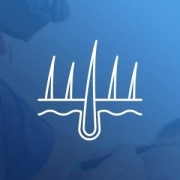Understanding Why Beard Transplants Can Fail
Dr. Yetkin Bayer > Beard Transplant > Why do beard transplants gone wrong?
What is Beard Transplant?
Beards are important part of a male body because it affects male personality and characters. So it would be problem for men when beard hair is thin or lack of beard growth caused by genetics, burns or wounds. Beard transplant procedure is a medical solution for men who want to grow their beards or have bushy beards. The procedure of beard hair transplant is basically like traditional hair transplant. Grafts are taken from donor area which has strong hair that applicable to implant, and then grafted hairs are planted the beard area where it has low hair density.
The process involves transferring hair follicles from one part of the body (usually the back of the head where hair is denser and less susceptible to balding) to the face.
Eligibility for Beard Transplant
- Sufficient Donor Hair: One of the primary considerations for eligibility is having enough healthy donor hair. The donor hair is usually taken from the scalp. Ideal candidates have dense hair growth at the back of the head.
- Realistic Expectations: Candidates should have realistic expectations about the outcome of the procedure. While a beard transplant can significantly improve facial hair density, results vary based on individual hair characteristics and growth patterns.
- Good Health: Ideal candidates are in good overall health and do not have medical conditions that could impede healing or increase the risk of surgery. Certain chronic conditions, such as uncontrolled diabetes or blood clotting disorders, may affect eligibility.
- Age: While there is no strict age limit, candidates are typically advised to wait until their mid-20s or beyond when hair growth patterns have stabilized. This helps ensure the transplant will complement natural hair growth as closely as possible.
- No Active Facial Skin Conditions: Individuals with active skin conditions affecting the face, such as acne or psoriasis, may need to wait until these conditions are under control before undergoing a beard transplant.
- Patience for the Growth Process: After a beard transplant, it takes time for the transplanted hair to fall out and then grow back permanently. Candidates should be prepared for this process and the time it takes for the final results to be visible.
- Non-Smokers or Willing to Quit: Smoking can impede the healing process, so candidates who smoke may be advised to quit prior to undergoing a beard transplant.
Does beard transplant have side effects?
Facial transplants are now becoming extremely prevalent year after year. The method enables you to grow a beard organically without the use of a product. Still, what are the possible consequences of beard transplant, and are there any negative effects of beard transplant surgery that you should be informed of?
Yes, there are some side effects such as Swelling and erythema, scarring, and adverse effects of beard growth medication that you will use following surgery.
Nevertheless, you can minimize these side effects by choosing the right surgeon, caring yourself, doing the routines that your surgeon advices, and keeping clean the scalp.
Why do beard transplants go wrong?
Beard transplants, like any surgical procedure, carry the risk of complications or unsatisfactory results. Several factors can contribute to a beard transplant going wrong, including both medical and technical aspects. Here are some of the main reasons why a beard transplant might not meet expectations:
- Inexperience of the Surgeon: The skill and experience of the surgeon performing the transplant play a crucial role in the outcome. An inexperienced surgeon may make errors in the angle and direction of the implanted hair, leading to an unnatural-looking beard.
- Poor Donor Hair Selection: For a successful transplant, the donor hair should closely match the hair in the recipient area in terms of color, texture, and growth pattern. Poor selection can result in a mismatched or unnatural appearance.
- Improper Handling of Follicles: The success of the transplant depends on the viability of the hair follicles. Mishandling during the extraction or implantation process can damage follicles, leading to poor growth or survival rates.
- Inadequate Post-operative Care: Proper aftercare is essential for the healing process and the overall success of the transplant. Neglecting post-operative instructions can lead to infections, scarring, or poor hair growth.
- Infection: As with any surgical procedure, there is a risk of infection. An infection can damage the newly transplanted hair follicles and the surrounding skin, potentially leading to poor outcomes.
- Scarring: Although modern beard transplant techniques are designed to minimize scarring, there is still a risk, especially if the patient has a predisposition to keloid scarring or if the procedure was not performed correctly.
- Unrealistic Expectations: Sometimes, the procedure may technically be successful, but the patient may feel dissatisfied if their expectations were unrealistic or not clearly communicated with the surgeon beforehand.
- Poor Healing: Individual variations in healing can affect the outcome. Factors like smoking, poor nutrition, and certain health conditions can impair wound healing and follicle survival.
- Shock Loss: This refers to the temporary loss of existing hair in the transplant area due to trauma from the surgery. While usually temporary, it can be distressing and impact the appearance of the transplant in the short term.
- Density Issues: Achieving the desired density may be challenging, especially in cases of significant baldness or patchiness. Sometimes, multiple sessions are required to achieve the desired outcome, and insufficient density after one session can be perceived as a failure.
To minimize the risk of a beard transplant going wrong, it’s essential to choose a highly experienced and reputable surgeon, have clear communication about expectations and potential outcomes, and follow all pre-operative and post-operative care instructions meticulously.
The Result of Beard Hair Transplant
This procedure is usually done successfully, but in some cases there are a few things to consider when going under this procedure, the result may not be as the patient expected, as this is not only harvesting and planting.
Root structure: the hair planted into the beard has a different quality from the hair that already exists in the patient’s beard. In general, hair produced in the scalp differs from other bodily hair. Bodily hair root contains only one hair. On the other hand, a healthy and grow-able hair root taken from the scalp contains two or more hairs. So, when a root taken from the scalp is planted in the face of the patient, it has hard for it to grow in the natural direction of hair growth. The person performing the procedure should be able to determine the most suitable roots to be plucked from the donor area in the scalp.
Hair thickness: Hair taken from the scalp has different thickness from hair taken from the beard; hair taken from the scalp is thinner compared to hair taken from the beard. Beards are usually thicker which makes the transplanted hair more vulnerable and more apt to breakage and split.
Beard hair density will not be the same as the scalp; which makes difficult to control hair growth direction after the transplant.
Growth levels for both kind of hair will not be compatible. The hair taken from the scalp may grow faster than the one from the beard which will have an effect on the patient’s appearance and consequently leaving him uncomfortable with the outcome.
Facial hair transplant may leave scars around the planted hair and may remain visible when the beard is shaved. Those scars are usually annoying and may bleed when the beard is shaved because t is not leveled with other parts of the skin.
These factors and side effects may appear when the hair transplant procedure is performed by an unqualified person like a nurse or any other inexperienced person.








